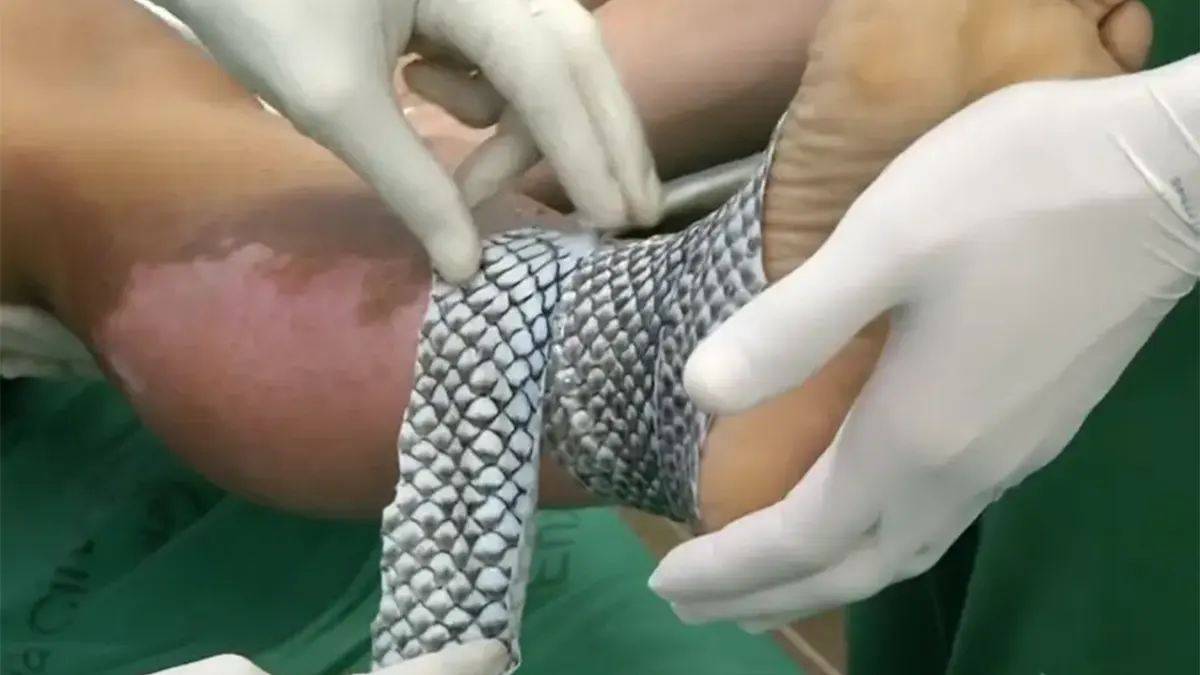A 23-year-old man who suffered partial thickness burns from a gunpowder explosion has made a full recovery thanks to an innovative treatment using tilapia skin as a xenograft.
The treatment, developed by Brazilian scientists, led to complete reepithelialization of the wounds within 12 and 17 days of treatment, with no side effects observed.
Tilapia skin was chosen as a potential xenograft due to its non-infectious microbiota, high levels of type I collagen, and similar morphological structure to human skin.
The fish skin is a highly available and easy-to-apply product that carries the promise of becoming the first nationally studied animal skin registered by the National Sanitary Surveillance Agency for use in the treatment of burns.
According to the World Health Organization, burns are responsible for 180,000 deaths annually, the majority in low- and middle-income countries. Non-fatal burns can lead to prolonged hospitalization, disfigurement, and disability, as well as stigma and rejection.
The patient in this case arrived at a burn treatment centre in Fortaleza, Brazil with superficial partial-thickness burns in his right upper limb and deep partial-thickness burns in his left upper limb. The tilapia skin was applied to the lesions, and no dressing changes were needed during the treatment process.
Prior to its use in the patient, the skin was subjected to a rigorous process of chemical sterilization, glycerolization, and irradiation, followed by microbiological tests for bacteria and fungi, before storage in refrigerated sterile packaging.
The patient was submitted to anaesthesia and analgesia, and after cleaning the lesion with tap water and 2% chlorhexidine gluconate and removing necrotic and fibrinous tissue, the biomaterial was applied to the upper limbs of the patient. Due to the experimental nature of the treatment, silver sulfadiazine cream 1% was also applied to the rest of the burned areas as a standard treatment.
Daily collection of blood samples was performed, and no significant alterations were found. The vital signs and clinical status of the patient remained stable throughout the treatment process. The tilapia skin showed good adherence to the wound bed, with no need for dressing changes.
On the 12th day of treatment, the tilapia skin started to slough off from the patient's right upper limb, and the researchers decided to remove it from the area. The patient's limb was placed under a shower and the wound was soaked with water, leading to the exposure of the underlying healed skin. A similar process was performed on the 17th day of treatment, allowing the tilapia skin to be removed from the left upper limb.
The success of this innovative treatment using tilapia skin as a xenograft has significant implications for the treatment of burn wounds. Tilapia skin is a readily available and affordable resource, making it an attractive option for use in low- and middle-income countries.
Further research is needed to establish the safety and effectiveness of this treatment on a larger scale, but the initial results are promising.









